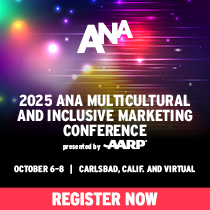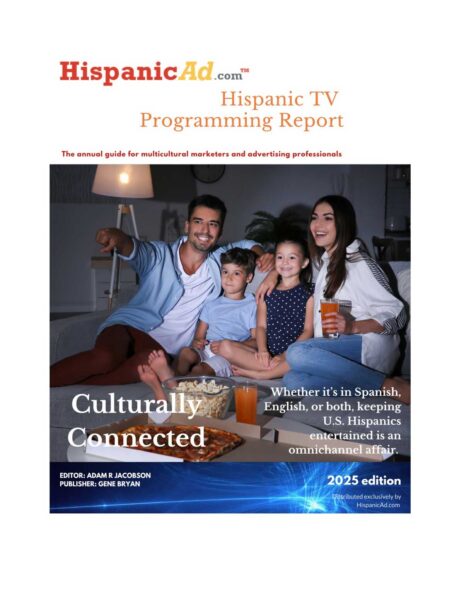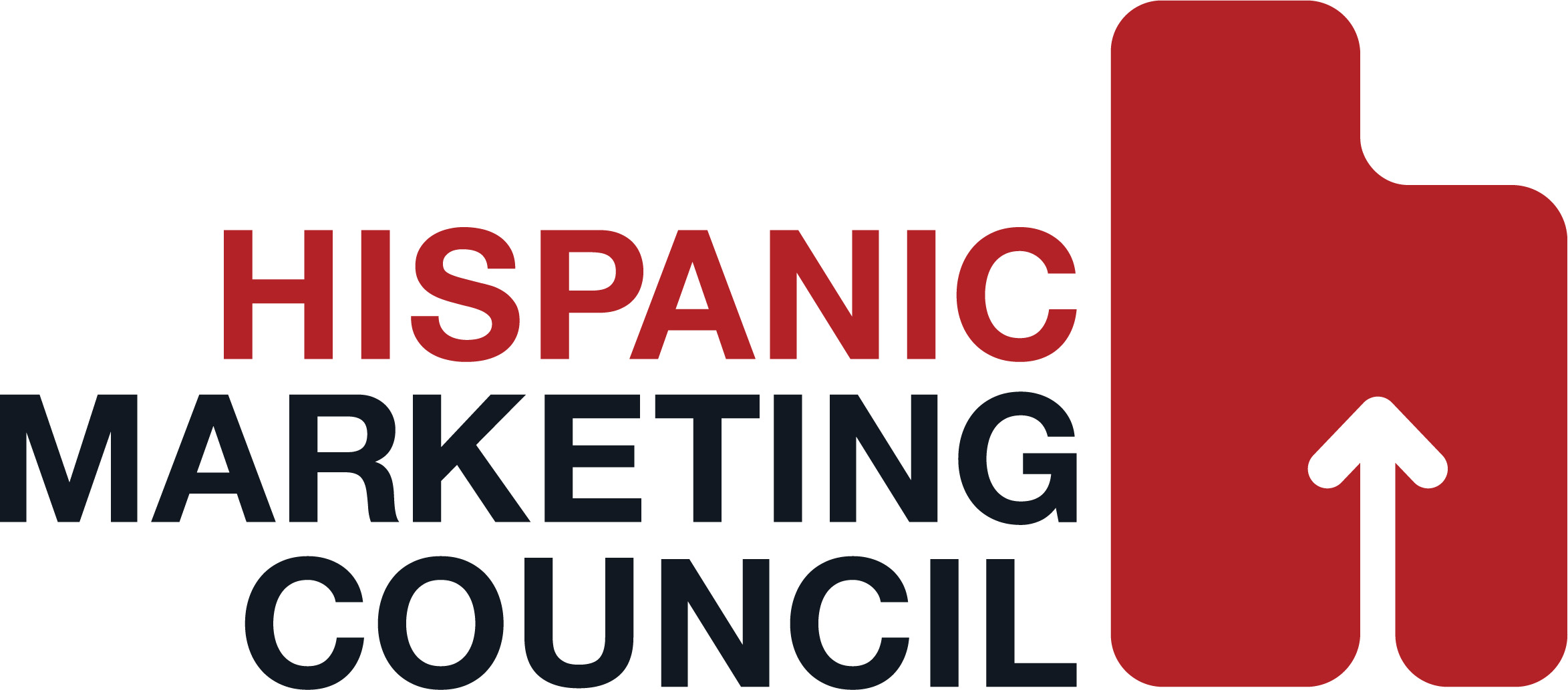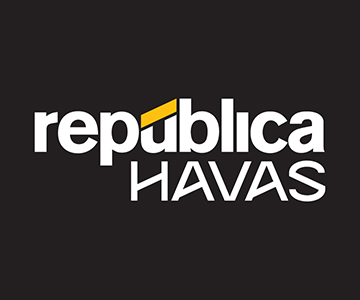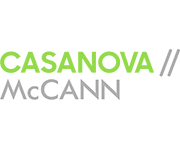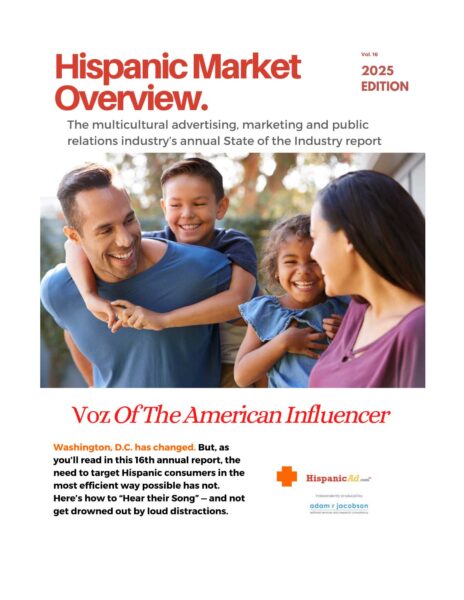Mainstream Media and the Spanish Language: Change, Representation, and Expression
June 25, 2025

By Meghan Bannister & Samantha Humphrys
The origin of the Spanish language in media dates back to 1598. The definition of “media” at the time was much narrower and included newspapers, manuscripts, and performing arts. It was at this time that conquistador Juan de Oñate’s men improvised a performance based on their adventures in New Mexico. This marked the first European-style live theater performance to take place north of the Rio Grande (Wilkinson, 2016). Since then, the media has always played a powerful role in the lives of Hispanics. It has become a source of expressing, sharing, and preserving their culture. However, with a large majority of the increase in the U.S. Hispanic population coming from births, it poses the question: are Hispanic youth still interested in consuming media in Spanish? According to research, the answer is yes! In 2023, it was estimated that 72% of Hispanics consumed some amount of Spanish-language TV (Stoll, 2023, as cited in Botek, Parker, 2024). This is even true for English-speaking Hispanics, as it has been found that “up to 30% of their television viewing” is in Spanish because it helps keep ties with family members who are Spanish-dominant (Wilkinson, 2016). The past decade has been marked by the opportunity presented by tapping into the Hispanic market for the creation of media; more TV shows, movies, commercials, and advertisements are incorporating the Spanish language. The widely popular TV show “Jane the Virgin” incorporates elements of Spanish, often without English subtitles. By incorporating Spanish language, this media draws a demographic of Spanish-speakers who deeply resonate with the Spanish language being a part of their culture. Additionally, it spreads Hispanic culture to viewers who are not Hispanic through the incorporation of the language, objective cultural elements, and even goes a step further by incorporating subjective cultural elements.
Furthermore, more companies are beginning to incorporate code-switching elements into their advertising to resonate with Hispanic audiences. In February 2024, Cheerios rolled out special boxes promoting healthy heart habits by displaying “names like Mom, Friend, Grandparents, and Family in both English and Spanish” on the boxes (from a General Mills news release). General Mills states, “when people see Grandma, Abuelo, Bestie, Dad, and the names of other loved ones on the cover of their box, they will be reminded to take care of their heart not only for themselves, but for those people who mean the most to them” (General Mills, 2024). This campaign targeted a broad audience, part of which was to include Hispanic consumers. The boxes display the name in English on one side and Spanish on the other. Authors Chapa & Korzenny (2025) capture this idea well: “these subtle uses of code-switching are unlikely to alienate non targeted viewers while still connecting well with the target” (Chapa & Korzenny, 2025). This campaign exemplifies the direction that U.S. culture and marketing strategies are headed in: one that is heavily influenced by Hispanics and their culture.
When developing a campaign targeted at Hispanic consumers in the U.S., there must be a delicate balance of English, Spanish, and bilingual content. This is where language consumption insights and media planning come in. It is very common for a Hispanic household to have various levels of acculturation and, in effect, different language preferences (Chapa & Korzenny, 2025). Therefore, it is important that media and advertisements take this into account when targeting the Hispanic population and do not overly rely on English or on Spanish for communication of their messaging. If translation is put to use, it is important that marketers are cautious with the emotional connotations of the Spanish words they are using, as English does not always translate well to Spanish, and it is imperative to be culturally adaptive (Chapa & Korzenny, 2025). Language preferences impact channel selection, messaging tone, platform use, and creative strategy in many ways to reach and connect with consumers. When discussing marketing materials, one article highlights that “mail offerings, brochures, and even websites should offer to the bilingual consumer the opportunity to choose their language of preference” (Alvarez et al., 2014, p. 7). By offering both Spanish and English options, marketers show their respect for consumer choice, ultimately increasing trust and engagement. Having this choice also influences channel selection, and there are many Spanish-language TV networks like Univision or Telemundo to cater to Spanish-speaking audiences. Meanwhile, there are other platforms, such as Facebook or Instagram, where code-switching is normalized and may appeal to bilingual users. Moreover, message tone must align with these consumer preferences, and Spanish messaging often benefits from a warm, familial tone, while English content may lean more formal or neutral depending on the audience. As Chapa & Korzenny (2025) explain, “successful Hispanic marketing efforts are those that develop a close connection between a brand and Latino consumers at the emotional level by tapping into their cultural roots” (Chapa & Korzenny, 2025). Creative strategy must recognize whether to build separate Spanish campaigns or adapt bilingual ones using imagery, expression, and emotional elements to align with language use. Ultimately, catering to language preferences, whether Spanish only, English only, or bilingual, drives more effective cultural resonance and consumer connection as it relates to the consumer on a more personal level.
To effectively reach different segments of U.S. Hispanics, marketers should carefully balance English, Spanish, and bilingual content based on the audience’s cultural identity, language preference, and level of acculturation. As Chapa & Korzenny (2025) state, “it is critical to have a compatible positioning in both English and Spanish so that all members of the family receive comparable messaging about a brand” (Chapa & Korzenny, 2025), as households often include both Spanish and English-speaking individuals. Not all Hispanics speak the same language at home or connect with the same type of messaging, so it is important to avoid a generalized approach. Furthermore, for some consumers, Spanish may hold deep emotional value, even if they are fluent in English. As one U.S.-born Hispanic shared, “Spanish is my mother tongue and it is the tongue of my mother. Spanish is still the language which I feel most clearly speaks from my heart” (Chapa & Korzenny, 2025). Therefore, using Spanish or bilingual messaging can create a strong emotional connection with these individuals. At the same time, other segments, especially younger or more acculturated Hispanics, may respond better to English or a mix of both. Due to the importance of language within Hispanic culture and varying preferences for different segments of U.S. Hispanics, marketers should study their audience closely to adapt their language strategy. When targeting Hispanics, the use of the language holds a strong importance both culturally and communicatively, as there are varying levels of English, Spanish, and bilingual language among the population.
When creating campaigns for Hispanic audiences, brands must go beyond simple translation and also focus on cultural relevance. As previously mentioned, when translating ads word for word from English to Spanish, it often leads to confusion or messages that feel disconnected, as there are differences in the language, and the wording is not always direct. Beyond this, when discussing the significance of translators, Chapa & Korzenny (2025) point out that, “an effective simultaneous interpreter not only speaks words as they are uttered in the room but also makes gestures to convey the meaning of the expression” (Chapa & Korzenny, 2025). This highlights the importance of language, extending beyond mere words to include mannerisms and expression for clear understanding, which is something brands must be intentional about. Furthermore, tone is another factor that brands should pay attention to when navigating language effectively. For example, a message that feels warm, respectful, and centered around family will often connect more deeply than one that is overly casual or too direct. As one article explains, “a simple word-for-word translation can fail to capture emotions,
idiomatic expressions, and societal norms, leading to misinterpretations or even offensive content” (Tawfik, 2025).
Another recommendation is that brands should add English elements where it makes sense and can also reflect on how bilingual consumers speak in their daily lives. This is especially true for younger generations who may switch between languages naturally. As one article highlights, “students perceive Spanglish as a natural and necessary medium of communication in their daily lives in the United States” (Osorio, 2015, p. 3). At the same time, marketers need to be thoughtful about generational differences. For example, first-generation immigrants may prefer Spanish-language media and messages that focus on tradition and community, while second or third-generation consumers may connect more with English or bilingual content delivered on digital platforms like Instagram or YouTube. Understanding these media preferences helps brands meet Hispanic consumers where they are. Overall, using the Spanish language alone is not enough. Brands need to include deeper cultural elements such as expression, tone, emotions, and cater to different levels of fluency. As Chapa & Korzenny (2025) explain, “language is important, but culture is even more powerful” (Chapa & Korzenny, 2025), and brands that take the time to understand this will build stronger and more meaningful connections with consumers.
Language plays a powerful role in multicultural marketing because it connects with people on a personal and emotional level. This is especially true for Hispanic consumers, who may feel more understood and valued when brands use Spanish or bilingual messaging that includes and reflects their culture. As research has shown, it is not simply about what language is used, but how it is thoughtfully presented through articulated tone and creative style. Marketers must consider different levels of acculturation, media preferences, and generational differences when connecting with consumers from varying cultures. When done meaningfully, language helps brands build trust, create cultural relevance, and reach their audience in a way that feels authentic and respectful.
References
- Alvarez, C. M. O., Dickson, P. R., & Hunter, G. K. (2014). The four faces of the Hispanic consumer: An acculturation-based segmentation. Journal of Business Research, 67(2), 108–115.
Chapa, S., Korzenny, B.A., & Korzenny, F. (2025). Hispanic Marketing: The Evolution of the Latino Consumer (4th ed.). Routledge. - “Heart-Shaped Cheerios Are Back with Special-Edition Name Boxes.” General Mills, 2024, www.generalmills.com/news/press-releases/heart-shaped-cheerios-are-back-with-special-edition-name-boxes.
- Osorio, A. (2015). The role of Spanglish in the social and academic lives of second generation Latino students: Students’ and parents’ perspectives [Doctoral dissertation, University of San Francisco]. USF Scholarship Repository. https://repository.usfca.edu/diss/366/
- Parker, G.A., Botek, M., Pascual y Cabo, D. “The Evolving Landscape of Spanish Language Representation in U.S. Media: From Overt to Covert Discrimination. Languages.” Spanish in the US: A Sociolinguistic Approach, 2024, https://doi.org/10.3390/languages9060220.
- Tawfik, F. (2025, March 11). The impact of cultural nuances on translation accuracy. Ad-Astra Inc. https://ad-astrainc.com/blog/the-impact-of-cultural-nuances-on-translation-accuracy
- Wilkinson, K.T. “Spanish-Language Television in the United States.” Routledge, 2016, https://www.taylorfrancis.com/reader/read-online/528cd4cf-761c-44b7-a32b-6ba8b56fdc43/book/epub?context=ubx.











